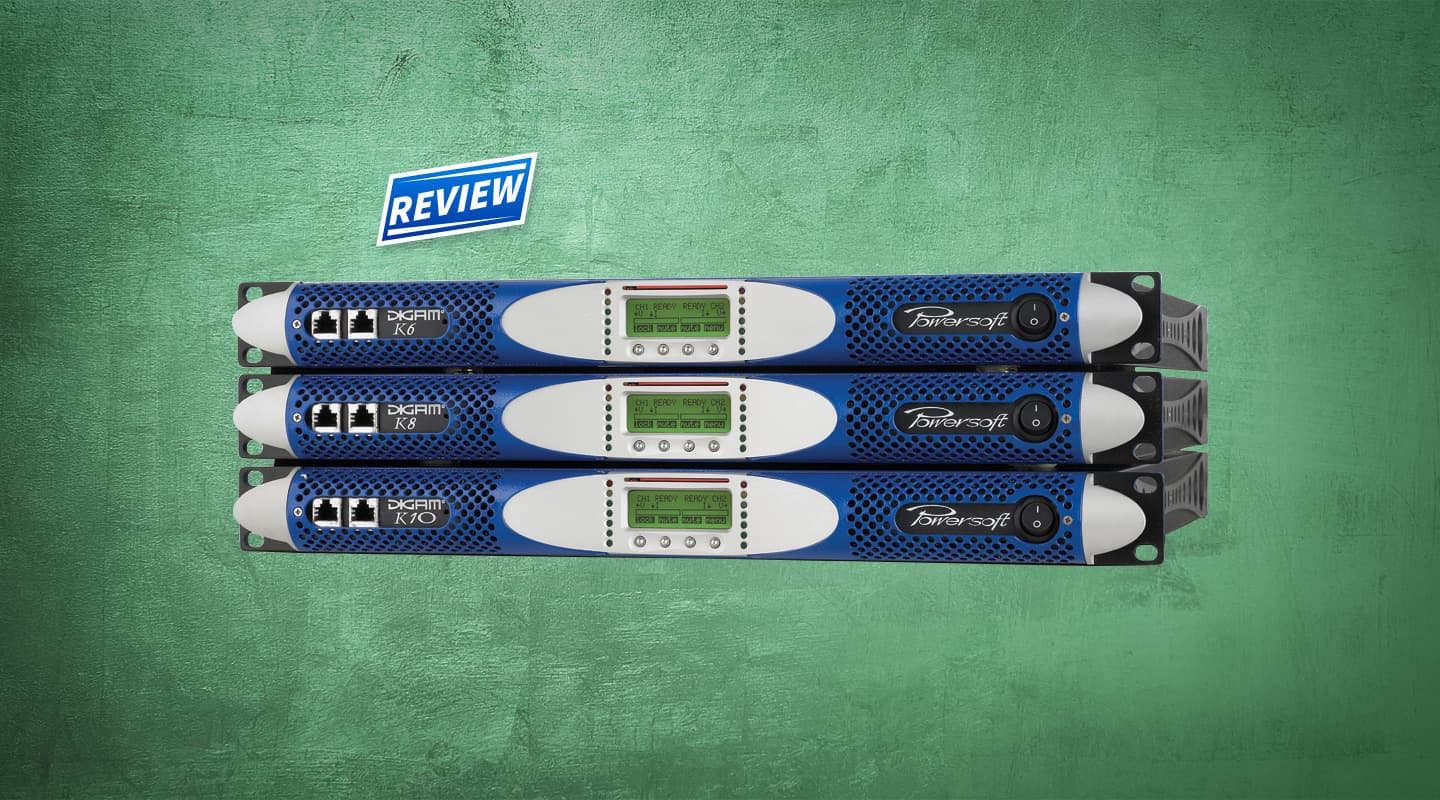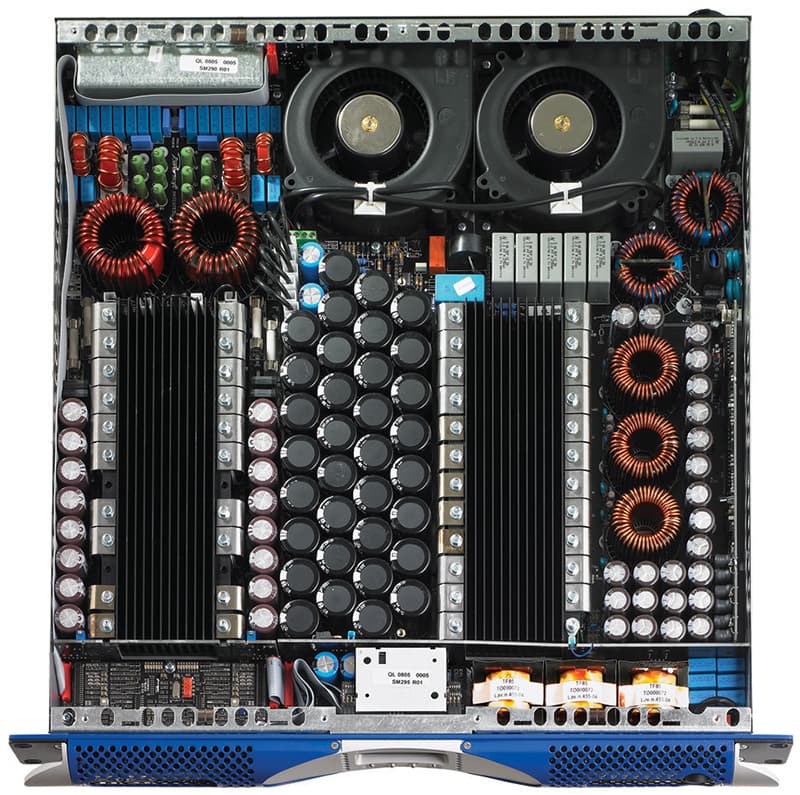
Review: Powersoft K Series
The K Series shows us exactly what ‘digital’ amplification is capable of. AT looks at the power and the passion.
I suppose it was only a matter of time before power amps made it into the Space Age. For decades the humble amp was prized for how thumpingly heavy it was. If your amps were the size of a bar fridge and heavier than an anvil, you knew you were onto something – big and heavy meant enormo-transformers and lots and lots of power.
Then you have a company like Powersoft that began life ploughing another amplification furrow. From Powersoft’s inception (in Florence, Italy, in 1995) it opted to design a PWM (Pulse Width Modulation – otherwise known as Class D) amplifier, in combination with switched mode power supplies (more on this later). The result was the DIGAM Series. Thanks to the Class D amplification the DIGAMs were very efficient (hardly any of the available power was emitted as heat and it used a lot less power) and what with the switched mode power supply it was very light.
Still, not everyone was convinced. PWM or Class D amplification might have been a good idea but the actual sound tended to be dogged by comparatively high distortion. Undeterred, Powersoft has thrown its full weight behind figuring out the problems of Class D to the point where few would now contend that it’s anything but the equal of what can be achieved with traditional amp technologies.
The K Series represents the latest and greatest in Powersoft amp design. All the amps in the Series – the K10 (6000W @ 2Ω), K8 (4800W @ 2Ω), and K6 (3600W @ 2Ω) – come in a 1RU package and ably demonstrate how much power and performance can be shoehorned into such a compact, light-weight unit.
POWER UP
Central to the K Series performance is the power supply. Switched mode power supplies as a concept aren’t anything to write home about, but Powersoft has devised something particularly clever here. The K Series’ PFC power supply is incredibly adaptable. It remains unperturbed by what voltage you throw at it – when it comes to the PSU, the only difference between here and The States, for example, is the connector at the end of the power lead. But the ability to run the amp from territory-to-territory is only half the story. Because of the PFC’s forgiving nature, it’ll still run at an optimal level during power fluctuations. Dodgy power is often a fact of life and to have an amp that sails through power swings is an amazing boon.
Almost as impressive is the array of control, diagnostic and networking functionality. An on-board microprocessor keeps an eye on a variety of parameters and automatically takes control of aspects like current control and fan speed as a result. Similarly, the amp packs some serious meltdown fail-safes. The fully protected circuitry design guards against DC, infrasonic, high frequency, thermal overload and short circuit.
The LCD is an unusual inclusion in a power amp but one that’s surely required as a window into what’s ticking away under the K Series bonnet. A whole host of parameters can be accessed via the display. As you can imagine it can be a bit fiddly scrolling through the hierarchical menu structure, but really the idea is you take care of your set up from a PC (Powersoft offers its Power Control software free of charge on its website). Just hook up the RJ485 connector at the back, and it’s a simple matter to plug in a computer and start making your adjustments. Once you jump in, it’s easy to get blown away by the breadth and depth of control.
Let’s take a quick look at some of the accessible parameters: digital gain-attenuation (you’ll notice the lack of volume knobs); maximum output power for each channel; maximum mains current draw; defeatable gate selection for each channel; and gain/sensitivity user selection capability. After a few quick taps on the front panel or computer keyboard a bunch of diagnostic readouts are available, including: temperature forecast with LCD-traced historical behaviour; downloadable log file of functional fault events with time-related trace; load impedance measurement/display for each channel; output power measurements/display for each channel; and mains voltage and current measurements/display.
Once you’ve tweaked your settings to your heart’s content they can all be saved onto a Smartcard and transferred to other units. Or, if you like doing your homework, you can configure your settings on a PC using the Power Control software, save those to the Smartcard, pop it into your pocket and be ready for the job the next day.
Round the back, the inputs are on balanced Neutrik Combi connectors. The outputs are on Speakons. The power connector is an industrial strength power connector – something called a CPC plug. It features three massive pins and an interlock.

NO SWEAT
It’s not often that we have an amplifier that warrants a six-page review… but the Powersoft K Series is certainly a razor-sharp piece of technology that could well-deserve such treatment. It points the way ahead for ‘smart’ amplification – an amp that monitors its own performance, self regulates, can be easily networked and configured, that’s compact and lightweight. Features like the PFC power supply, and the on-board peak limiter that protects your speakers… all point towards the K Series being state-of-the-art. The efficiency of these amps is extraordinary – more than 90%. To have an amp pumping out 1000s of Watts and barely raising a sweat is really quite something to behold. Regardless of all that, an amp is ultimately judged by its sound quality. And it’s in this department that Powersoft has made the biggest leaps forward. The sound of the K Series is genuinely right up there with the best that conventional analogue amps can offer.
In summary, the K Series addresses modern PA and install demands – it’s powerful, it’s compact, it’s efficient… and it sounds great.
















RESPONSES